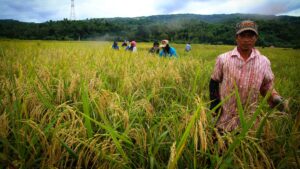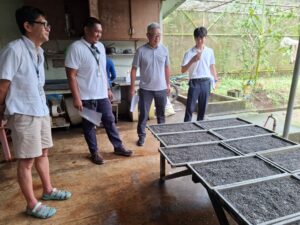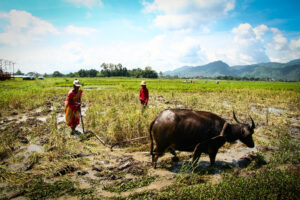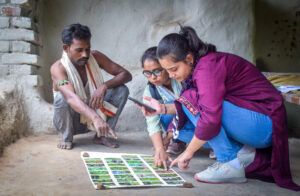By Sankalp Bhosale, Suresh Kadaru, and Glenn Concepcion
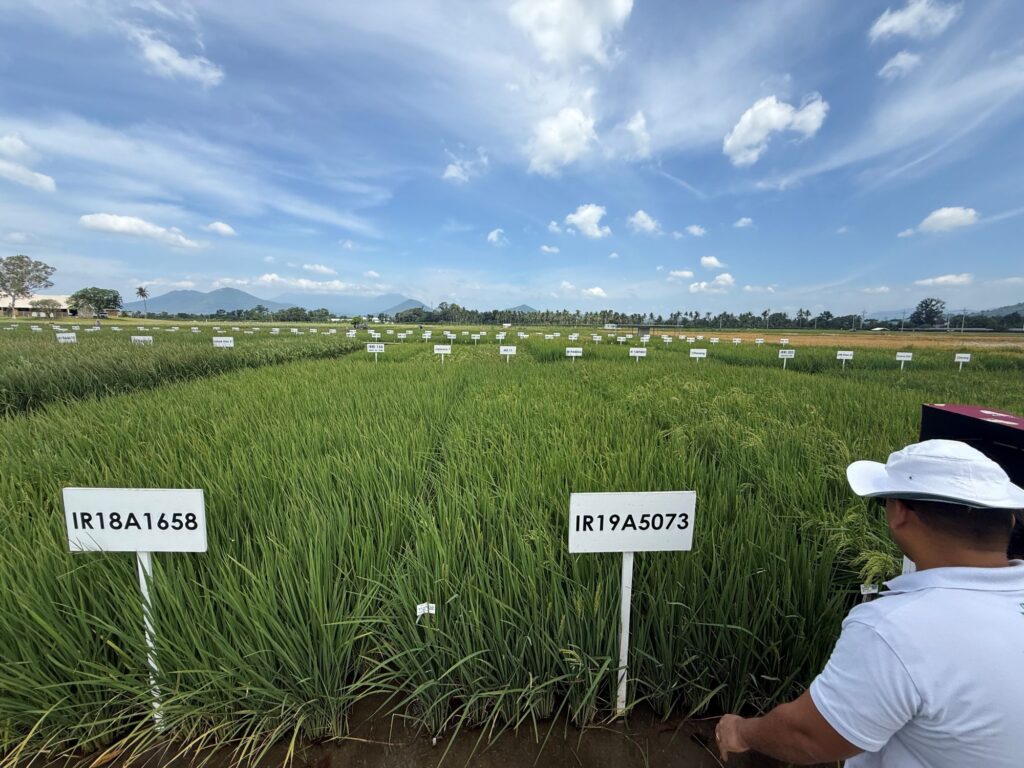
As the global population continues its relentless climb, projected to reach 9 billion by 2050, the challenge of feeding humanity intensifies. With arable land shrinking, the world faces a critical need to produce more food from less land. For decades, plant breeders have been on the front lines of this battle, developing improved crop varieties. However, the pace of improvement in staple crops like rice has slowed, with yields plateauing and older varieties remaining stubbornly popular among farmers, hindering the adoption of newer, potentially better options.
But a groundbreaking new approach, called the OneRice Breeding Framework, is poised to change this narrative. Developed at the International Rice Research Institute (IRRI), a leading research center within the CGIAR global research partnership, this framework is a comprehensive, end-to-end, and market-driven system designed to accelerate the development and delivery of superior rice varieties. It promises not only to increase food production but also to enhance nutrition and improve the incomes of millions of rice farmers worldwide keeping pace with rapidly changing climate.
The imperative for change
IRRI has a storied history of innovation, particularly during the Green Revolution of the 1960s. Its nutrient-responsive semi-dwarf rice variety, IR8, was instrumental in addressing widespread food shortages, leading to unparalleled economic development in many developing countries. Subsequent varieties like IR36, IR64, and IR74 further improved grain quality and disease resistance, while more recent innovations incorporated genes for submergence tolerance. Many of these varieties are still grown by farmers or used as genetic building blocks in breeding programs across South Asia, Southeast Asia, and East and Southern Africa.
Despite these past triumphs, IRRI’s breeding programs in recent decades encountered a significant hurdle: low genetic gain. Genetic gain refers to the rate at which desired traits, such as yield or disease resistance, are improved in a crop population over successive generations. This slowdown was attributed to several factors, including breeders often crossing non-elite (less improved) germplasm with high-yielding lines, and a lack of systematic approaches to recycle the best genetics within breeding populations. Historically, IRRI’s breeding programs were organized by specific ecosystems or stress targets (e.g., irrigated, rainfed, salinity tolerance), each with its own strategies and terminology. This limited collaboration, efficiency, and the mainstreaming of best practices and analytics in genetic improvement.
The CGIAR system and its donors recognized the urgent need to accelerate genetic gain in publicly funded breeding programs to ensure global food security. In response, IRRI embarked on a transformative journey over the past decade, culminating in the OneRice Breeding Framework. The framework provides a unified philosophy, standardized vocabulary, and the adoption of a common data-driven operating procedures, which were previously lacking across IRRI’s diverse breeding efforts. It is designed to overcome the challenge of yield stagnation and push genetic gains beyond 1.5% to meet the rising food demand amidst a changing climate.
From market to farmer’s fields
The OneRice Breeding Framework is a testament to modern agricultural science, integrating every step of the breeding process, from understanding market needs to delivering seeds of improved varieties to farmers.
1. Market-driven product design: The journey begins not in the lab, but in the marketplace. IRRI employs rigorous market research to define “market segments”, groups of farmers or consumers with similar demands for a rice variety that consider factors like maturity, grain type, and growing environment. These insights are translated into “product concepts” (also known as Target Product Profiles or TPPs), which are detailed lists of traits that new varieties must possess to meet market needs and outperform existing benchmark varieties. Through a global survey, IRRI has prioritized 24 market segments, with 11 currently addressed by active breeding pipelines. This ensures that breeders are developing varieties that farmers want to grow and consumers want to eat.
2. Accelerated product creation: The framework emphasizes “population improvement through recurrent selection,” a cyclical process of selecting and intermating the best individuals to continuously improve a breeding population. Crucially, it promotes an “elite x elite” crossing strategy, focusing on combining the best performing genetic lines to achieve higher and more sustainable genetic gains, departing from previous practices of introducing less-improved materials that often dilute overall performance.
3. Next-generation technologies: To drastically shorten the time it takes to develop new varieties, OneRice leverages several cutting-edge innovations:
- Rapid Generation Advance (RGA): This “speed breeding” technique reduces the time needed to fix new genetic lines from 3-4 years to just one year, allowing for 3.5-4 generations annually. This directly translates to faster genetic gains.
- Marker-Assisted Selection (MAS): At early stages of development, breeders use DNA markers to quickly identify plants carrying desirable major genes for traits like disease resistance or abiotic stress tolerance. This efficient “low-density genotyping” helps select only the most promising lines for further, more expensive field evaluations.
- Genomic Selection (GS): This powerful tool uses DNA markers across the entire genome to predict a plant’s overall genetic potential, or “genomic estimated breeding value” (GEBV), for complex traits like yield. IRRI is one of the few public rice breeding programs to routinely integrate GS into its operations, significantly enhancing selection accuracy and reducing cycle time.
4. Strategic pre-breeding: A critical challenge is that many valuable trait genes needed for product concepts are absent or rare in existing elite breeding materials. The framework addresses this through a two-stage pre-breeding process:
- Native Trait Deployment: This involves precisely introducing desirable genes from diverse sources into elite rice backgrounds using marker-assisted backcrossing. This ensures the valuable gene is incorporated without bringing along undesirable genetic baggage (known as “linkage drag”) that could negatively impact yield or other important traits.
- Line Augmentation: This rapidly diversifies the elite backgrounds containing new genes, ensuring that breeders have a wide array of high-quality donor material for their crossing programs, without compromising yield or genetic gains.
5. Rigorous testing and delivery: New breeding lines undergo multi-environment trials (METs) in diverse “Target Populations of Environments” (TPEs) across South Asia, Southeast Asia, and East and Southern Africa, often in collaboration with National Agricultural Research and Extension System (NARES) partners. This ensures that new varieties perform well under real-world conditions. A “sparse testing” approach, combined with genomic prediction, allows IRRI to efficiently evaluate a large number of lines across these regions. Finally, successful varieties proceed to on-farm trials (OFTs) in numerous locations to validate their performance and adaptability before widespread adoption. The goal is a >10% average yield advantage over existing farmer-preferred varieties and benchmarks.
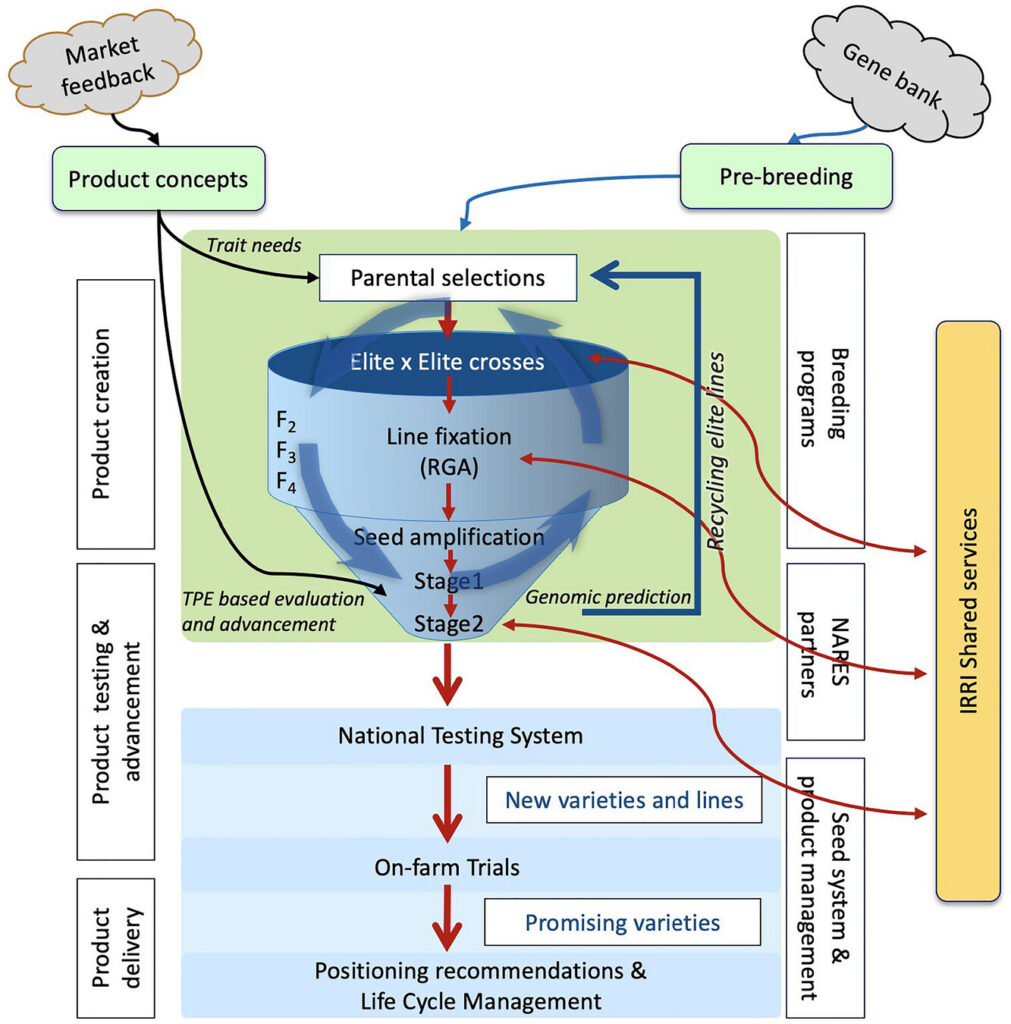
Collaboration and infrastructure
The OneRice Breeding Framework is supported by a robust operational backbone. IRRI’s Breeding Operations Unit (BOU) centralizes key activities like crossing, genotyping, and data collection, achieving significant economies of scale and ensuring high-quality outputs. The Seed Health Unit (SHU) manages all seed shipments, including necessary permits and phytosanitary certifications, to NARES partners globally.
Data management is a cornerstone of this modern approach. The open-source Enterprise Breeding System (EBS) serves as a centralized repository for germplasm, trial, and nursery data. This is complemented by an advanced, automated analytical workflow that processes phenotypic and genotypic data, generates breeding values, and designs optimal crosses. This digitization ensures data security, accessibility, and efficient analysis, supporting data-driven decision-making.
Crucially, the framework emphasizes and is based on strong partnership with NARES partners in target regions. This collaborative NARES-IRRI network with its “hub-and-spoke” model ensures that rapid testing and dissemination are carried out effectively, and that local market needs are met. These partnerships also include ongoing focus on capacity-building to empower NARES scientists with modern breeding methods and data analysis skills and is among one of the largest crop breeding networks among CGIAR crops.
Impact and future outlook
The implementation of the OneRice Breeding Framework has already yielded encouraging results. Breeding cycle times at IRRI have been reduced to 3 years, and one pipeline has already observed a genetic gain of approximately 1%, a notable increase over historical estimates. This framework is not limited to inbred rice; its principles are adaptable to hybrid rice breeding programs and even other self-pollinated crops.
By integrating market intelligence, cutting-edge genomic technologies, rapid generation advance, and strong partnerships, the OneRice Breeding Framework developed by IRRI within the CGIAR system represents a fundamental shift in how new rice varieties are created and disseminated. It is a powerful blueprint for public crop breeding programs worldwide, promising to deliver better, faster-yielding, and more resilient rice varieties, securing food, nutrition, and income for a growing global population for decades to come.
Read the review:
Onerice breeding framework: An end-to-end system to develop better varieties faster
Sankalp Bhosale, Parthiban Thathapalli Prakash, Suresh Babu Kadaru, Waseem Hussain, Shalabh Dixit, Jauhar Ali, John D. Platten, Md Rafiqul Islam, Vikas Kumar Singh, Rosemary Murori, Alexis Ndayiragije, Ajay Panchbhai, Swati Nayak, Princess Dela Cruz, Matty Demont, Jerome Bartholome, Giovanny Covarrubias-Pazaran, Joshua N. Cobb, Hans Bhardwaj
Crop Science, 65, e70087
https://doi.org/10.1002/csc2.70087

